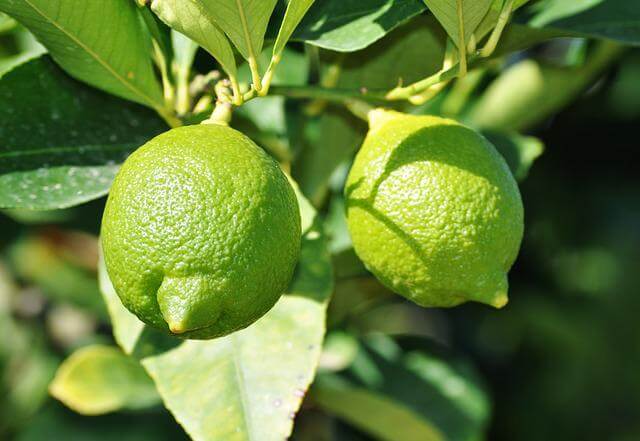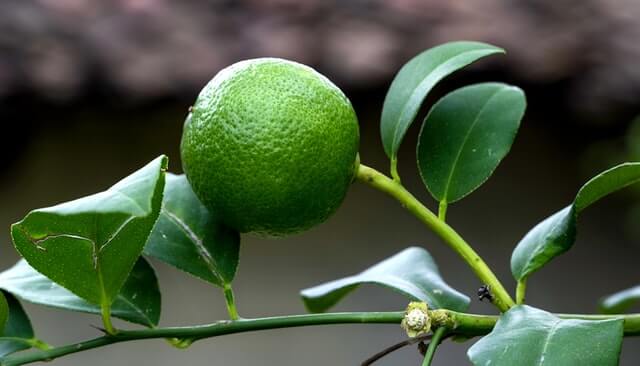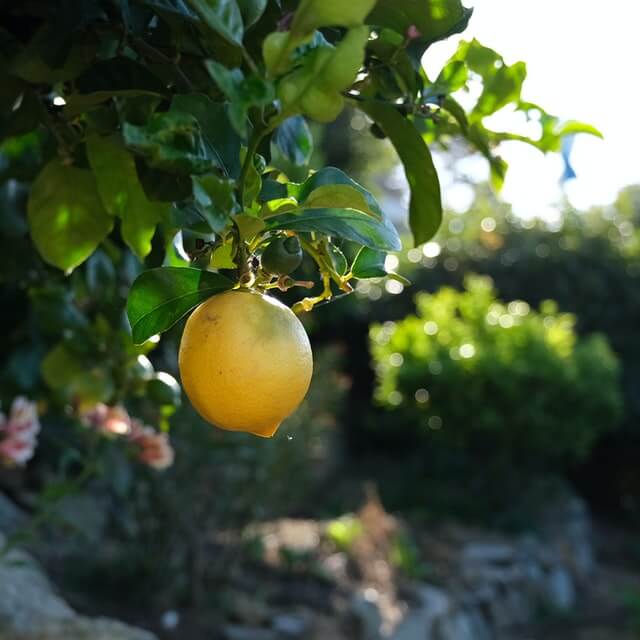There is nothing as tasty and refreshing as lemon. No matter if it is a lemon juice squeezed on your favorite seafood or a freshly squeezed lemonade, the taste, refreshment, and aromatic scent of this little citrus fruit is always delightful.
But it is boring for a garden to buy lemons every time. Rather is not it delightful to grab a ripe lemon from your garden directly and use it directly on your food?
Growing a lemon tree is not that difficult. As long as you’re providing for their basic needs, growing them can be a rewarding experience.
But you don’t know how to grow a lemon tree! No worries. You are at the right place. We will share some valuable ideas that you can use to plant and grow your own lemon tree.
Lemon trees are pretty hardy. Thus they can grow in different types of soil. But it grows well in a loamy soil. Click To TweetHow to care for a lemon tree?
Soil
Lemon trees are pretty hardy. Thus they can grow in different types of soil. But it grows well in a loamy soil. So sandy and loamy soil that drains well is a perfect option for a lemon plant. Avoid using clayey soil.
When it is about the pH level of soil, they require slightly acidic soil with a pH of 5.5 to 6.5 for optimal growth. They are likely to die in more acidic or alkaline soil.
If your soil is more acidic, you danass a base like manure or compost to it or if the soil is more alkaline, you can add some compound made up of powdered limestone.

Light
All citrus fruits love the sun, and so do lemon trees. It grows and fruits well when it gets full sunlight. Besides, it also can’t grow in a slightly shady spot. Thus, this plant requires at least eight hours of brighter light in a day.
Temperature
Lemon trees grow well when they get temperatures between 50 to 80 degrees Fahrenheit. So if you are not living in USDA growing zones 9 to 11, grow your lemon tree indoors.
Even in the zone of 9 to 11, if the temperature drops below freezing, you may be required to protect the plant. Make sure to use a covering on the plant all the way to the ground to help trap the heat.
Water
Water the lemon tree regularly. Water the plant as much water as needed. Don’t overwater so that the soil becomes soggy. Don’t underwater so that the soil remains dry.
Water your plant once or twice a week during the hot summer months. If you notice that the soil is drying out or the leaves are dropping from the tree, water the tree immediately.
Lemon trees require a lot of water. But don’t let your lemon plant sit in water. So always consider planting the tree in a well-draining soil otherwise the roots may rot.
If your location is experiencing a lot of rain, plant your lemon in a pot and bring it indoor until the rain passes away.
Humidity
Lemon plants grow well when they have a humidity level of 50% and above. If the humidity level of your area is lower than this, try to increase it by filling a tray with rocks and pouring water just below the top of the rocks, and placing the pot on the top of the rocks so that the humidity will rise up.
You can also use a small humidifier nearby to increase the humidity level.
Fertilizer
It is necessary to feed the plant with a fertilizer every 1 to 2 months during spring and summer as they are actively growing months. You need to fertilize the plant every 2 to 3 months during the fall and winter as they are dormant months.
A citrus-specific fertilizer is best for the lemon tree. But it is recommended to apply the fertilizer on the top of the soil, not with the rest of the soil.

Propagation of lemon tree
Most of the lemon trees are container groens that are purchased directly from the nursery. However, they can be propagated by air layering, cuttings, and seeds. Different varieties of lemons need different methods of propagation and everyone found different results through different methods. So it depends upon you which method you choose for propagation.
Propagation of trees is recommended to be done in late spring or early summer so that the cuttings will be healthy, new, and without any flowers and fruits on them.
But the best means of propagation is by cutting. Here’s the process below of propagation through cutting
Take a cutting from a mature and disease-free kather plant. Ensure that the cutting or segment is 3 to 6 inches long.
Remove all the leaves, fruits, or flowers from the cutting. Leave the top four leaves on the wood.
Dip the cut end in a rooting hormone powder to protect it against diseases and rot.
Place a high-quality potting mix that has been watered thoroughly in a medium-sized pot.
Plant the cutting into the soil. Make sure that the cut end is buried into the soil.
Cover the cutting and the pot with a plastic bag to preserve moisture. Set the plant out in a brighter location.
Water it regularly by keeping the soil moist and cutting occasionally until it grows new roots.
After the roots start growing or become established, remove the plastic covering and care for the plant as mentioned above.
Propagation of trees is recommended to be done in late spring or early summer so that the cuttings will be healthy, new, and without any flowers and fruits on them. Click To TweetPruning of lemon tree
Pruning is necessary for every plant to keep it healthy, and to promote new growth. So in the case of lemons.
If you are pruning your lemon tree, prune it after harvesting most of the lemons but before the buds start blooming. It is recommended to prune the plant between late summer and early spring depending on the climate.
To prune the plant, use a clean shear or knife to trim each of the new shoots to half of its original length. Pruning can be done by cutting the branch at a 45-degree angle. But be careful that you may not cut it back all the way to the main trunk.
Prune the long and ganglia branches but leave the thicker, and established branches. Trim all the low-hanging, downward-facing branches which are reaching toward the soil.
After pruning, take away all the dead leaves from the branches and remove the fallen ones from the soil.
Harvesting lemons
When the lemons become 2 to 3 inches in size, firm and juicy to touch, and solid yellow or yellowish-green in color, they are perfectly ready for harvesting.
If you prefer sour fruits, you can pluck them up when the color is green and they are small in size. The yellow it becomes, the sweeter it will be.
What matters the most to look at during harvesting? The size of the lemon. If you pick the lemon looking at its color, before it turns into an adequate size, all your efforts go in vain. The lemons will not be juicy and they are likely to be sour.
The lemons may still be green when they turn into the actual size, but it’s fairly okay. The size of the lemon is more important than the color. The lemons will not be juicy and they are likely to be sour.
The lemon can also continue to ripen even after they are plucked from the tree.

Common pests and diseases
Like other Citrus fruits, lemons are also likely to be attacked by certain types of diseases and pests that can harm the growth of this plant.
European brown rot is a common disease seen in lemons in which the lemons rot while they are on the tree.
Scale insects are likely to infect this delicious fruit. Generally, they colonize the leaves of the lemon and appear like a large white mass.
Lemon trees are also prone to aphids who eat the base of the leaves and start to munch. As a result, the leaves started to dry and curls had gradually fallen off the tree.
Conclusion
Lemon is a popular citrus fruit from the family of citron and has been from many civilizations. Besides being a tasty, and refreshing fruit, it has numerous health benefits and thousands of applications in culinary usage. Sometimes it also acts as an ant repellent.
So looking at the numerous benefits of planting a lemon tree, you should consider it growing in your garden.
So have a look at the guide and start growing it in your garden.
You may also like to read
How to Grow And Care For Avocado Plant- A Step by Step Guide
Growing Gooseberries: Know How to Plant and Prune the Savoring Fruit






